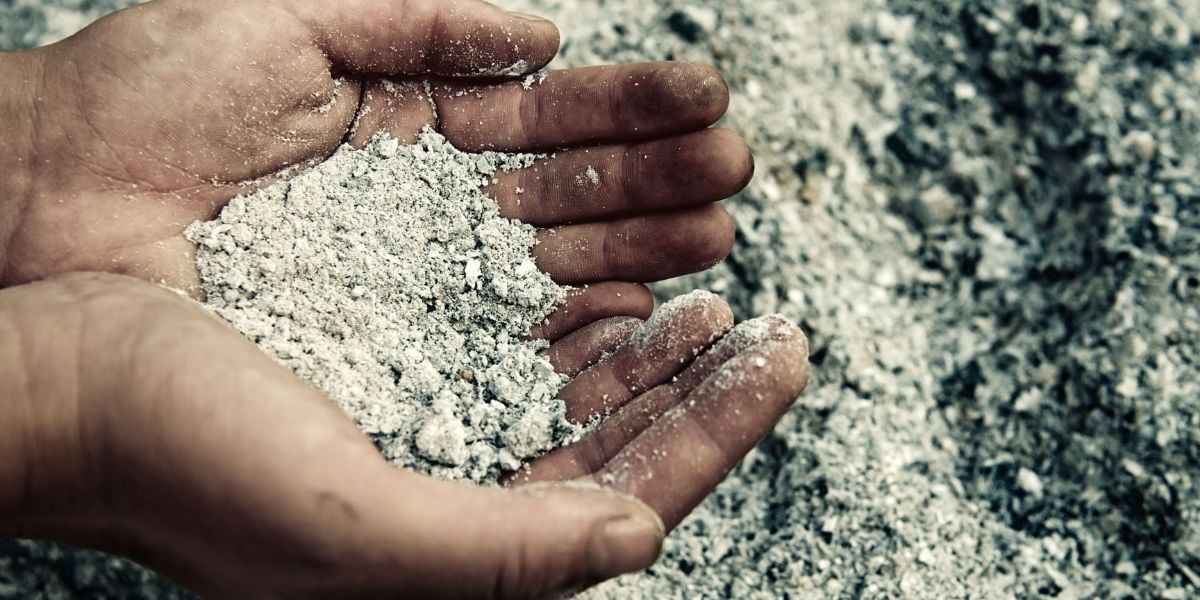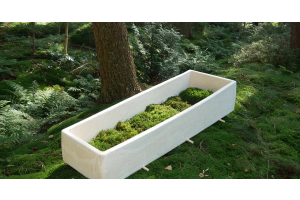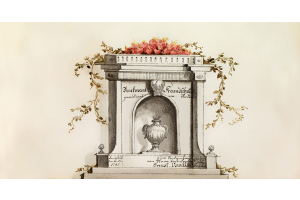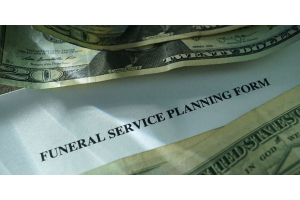
A death in the winter. Difficulty scheduling a memorial. Family members unprepared to accept the death of a loved one. There are many reasons that people never go to collect the ashes of their loved ones after they die and are cremated. Unlike traditional burials, cremated remains take up little space. Since ashes do not require a prompt burial, family members sometimes allow the remains to sit at the funeral home until a better time. But, as cremation trends toward the more popular method of treating the body after death, the number of uncollected urns at funeral homes increases. And, it is a problem all over the world. While most funeral homes simply hold on to the ashes, waiting for the family to come get them, some funeral directors are taking matters into their own hands. While the decision to leave the ashes at a funeral home is considered an option by many, there are many more dignified choices to give the deceased their due.


Uncollected Ashes in North America
Across North America, the story is the same. From California to Quebec, funeral directors are at a loss to determine what to do with the rising numbers of uncollected urns in their funeral homes. The Cremation Association of North America (CANA) maintains data about cremation in this region. And, for the 23,000 funeral homes in North America, uncollected ashes are a fact of life. According to Global News, CANA estimates that there are more than 2 million urns in funeral homes across North America, waiting to be collected. Some have been forgotten as an institutional problem. BBC reported that in 2004, Oregon State Hospital unearthed the ashes of more than 3,400 people, some dating back to the 1880s. But, for most cases, the matter is more personal. CANA’s executive director Barbara Kemmis told Global News that after families have begun to pick up the pieces, they still are unsure what to do with the cremated remains. They may not be aware of their options for scattering the ashes, as well as burial on land or at sea.
A Worldwide Problem
In the United Kingdom, funeral homes face the same concern. And, the older the funeral home, the older the ashes. BBC noted that some funeral homes in the U.K. have urns from the 1910s or 1920s. One funeral director in Southampton, England, begged for people to collect some of the 405 urns waiting at a single funeral home. All over the world, funeral directors often cannot conclude what to do with the ashes. Some funeral homes are becoming crowded due to cremation’s rise in popularity. Funeral directors dread making a decision to scatter or bury uncollected ashes, only to have the family members return to collect them. And, this does occasionally happen. In 2008, ABC News reported a story about a woman who collected her father’s ashes at a funeral home in Toledo, Ohio, 67 years after he died. That funeral home closed business after nearly 150 years, and needed to find homes for the uncollected remains. When the home published the names of the deceased in a local newspaper, the woman claimed the ashes of her father, who had died in 1941.
Funeral Directors Take Action
While most funeral homes make earnest attempts to either keep uncollected ashes or find family members to collect ashes, others have no choice but to take action. Depending on local laws, funeral homes must keep the ashes for a certain amount of time. Most U.S. states require them to hold onto uncollected ashes for a minimum of four years, although states like Ohio mandate a comparatively short 60 days. After that, it is up to funeral directors to decide. Kemmis of CANA told Global News that funeral directors sometimes scatter or bury the ashes themselves. But, they usually keep meticulous records of the names of the deceased and where the remains were scattered or buried. Some funeral directors believe that it is important to find a final resting place for the deceased, which is not in a funeral home. The Daily Mail in the U.K. reported last year about Phil Painter, a funeral director who publicly announced that he would scatter the ashes of 150 people whose remains sat unclaimed at his business. Painter said that this was a final effort to alert families to their need to come get the remains of their loved ones. He claimed that he was more than willing to give families the time they needed to make arrangements. But, for remains dating back as far as the 1950s, he said it was time to give them a proper service.
Modern Approaches
One of the reasons people leave the cremated remains of their loved ones at a funeral home is that they simply cannot decide what to do with the ashes. They are unaware of the many options available to them these days. Ashes may be scattered, buried underground, in a cemetery or even at sea. Although people may choose to keep the ashes of the deceased near them in a classic brass urn, they have other choices. These days, urns are designed for scattering, burial or as keepsakes. Some are even biodegradable. Urn manufacturers use a variety of materials to construct the urns, including: • Ceramic • Wood • Brass • Marble • Glass There are many choices in color and style, depending on what the family intends to do with the ashes. That way, people can select the urn that demonstrates the loved one’s style and personality. Additional options for cremated remains include cremation jewelry urns and custom urns.
Every funeral home has at least a few urns for ashes that sit uncollected by the family. While in most cases, funeral directors wait for families to return, some eventually decide to scatter the ashes themselves. When people know the many alternatives they have for the cremated remains of their loved ones, they can make a better choice.






In the State of Maryland, an executor is required to hold an heir's share of an estate for 6 months before distributing it to the other heirs. This is known as the "estate administration period."
In the case of the ashes, the executor is not required to hold them for the full 6 months if the heir has not responded to their requests. However, it is still a good idea to wait a reasonable amount of time before distributing them to the other heirs.
A reasonable amount of time would depend on the specific circumstances. For example, if the heir is living in another state, it may take longer for them to receive the request and respond.
If the heir still does not respond after a reasonable amount of time, the executor can distribute the ashes to the other heirs.
It is important to note that this is just a general overview of the law. The specific requirements may vary depending on the circumstances. It is always best to consult with an estate attorney to get specific advice.
Here are some additional things to keep in mind:
The executor should keep a record of all of their communications with the heir. This will help to protect them in case the heir later challenges the distribution of the ashes.
The executor should also keep a record of the date on which they distributed the ashes. This will help to ensure that they do not violate the 6-month estate administration period.
I hope this helps!
Certain laws in regards to cremation will differ from state to state, what state are you located in?
All funeral homes are different when it comes to the way they do business in regards to reaching out to a family after the cremation is done, but usually a phone call would be standard then possibly a follow up email or letter depending on the contact information provided. Most state laws require a funeral home to hold onto the cremains for a minimum of 4 years. How long ago was she cremated? Have you tried getting any info from the nursing home who helped set up the cremation?
Sincerely,
Susan Fraser